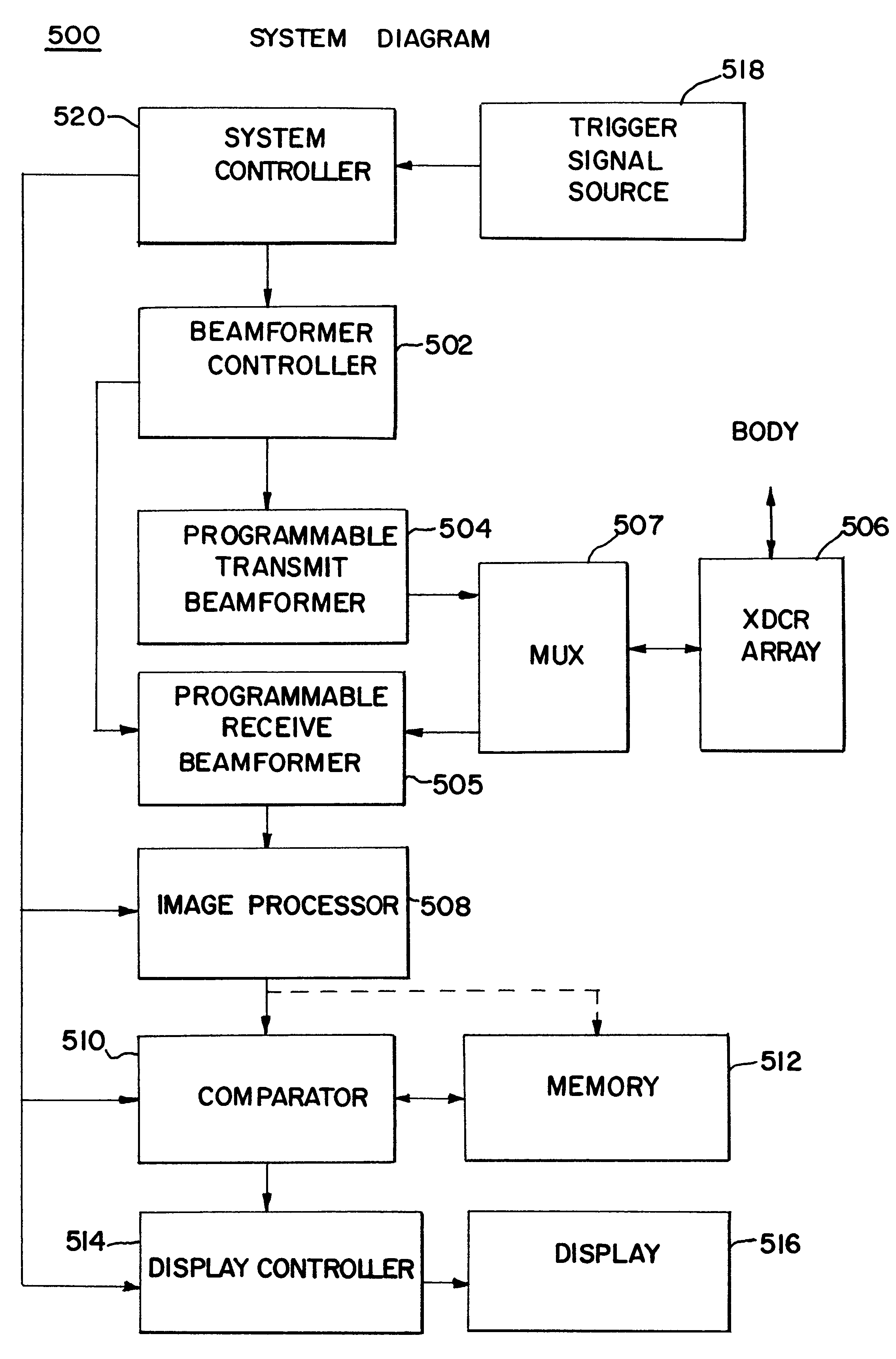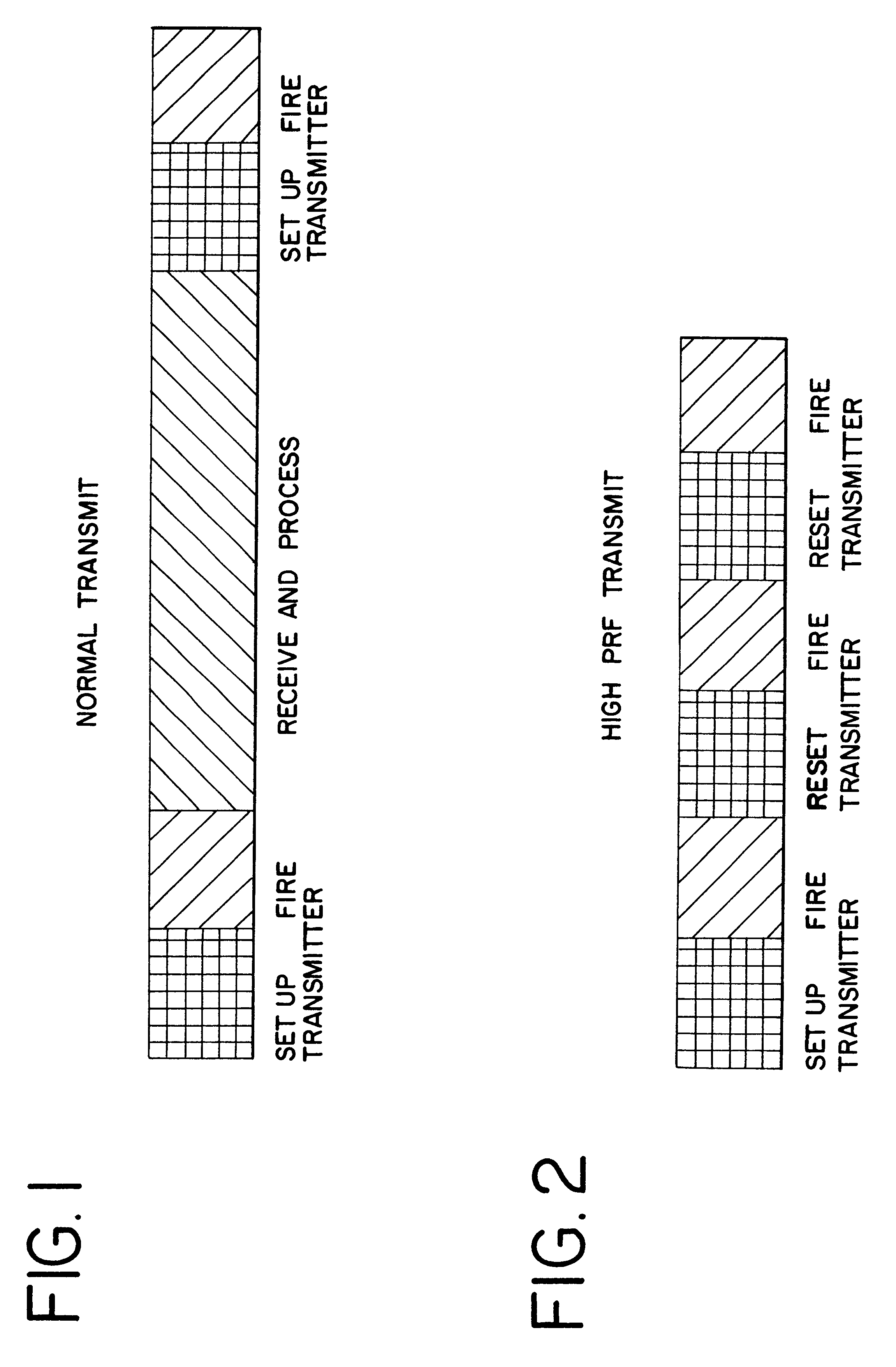Contrast agent imaging with destruction pulses in diagnostic medical ultrasound
a technology of diagnostic ultrasound and contrast agent, applied in the field of diagnostic medical ultrasound imaging, can solve the problems of increasing motion artifacts, reducing system frame rate, and many pulses needed to destroy contrast agents, and achieve the effect of enhancing the difference between contrast agents and tissue without sacrificing system frame rate or imaging resolution
- Summary
- Abstract
- Description
- Claims
- Application Information
AI Technical Summary
Benefits of technology
Problems solved by technology
Method used
Image
Examples
Embodiment Construction
Imaging pulses are pulses which are transmitted, received, processed and displayed. Imaging pulses in some cases can also be destructive to contrast agent. On the other hand, destruction pulses are herein defined as pulses which are transmitted into a body, but not used for imaging. Since destruction pulses are not used for imaging, there is no need to optimize destruction pulse parameters for imaging. These destruction pulses can be optimized for destruction of contrast agent by using low frequency, low bandwidth and high power pulses.
The first aspect of the invention is directed to improving the efficiency of destruction of contrast agent by using high pulse repetition frequency (HPRF) destruction pulses. Here, HPRF destruction pulses are defined as pulses which are transmitted at a rate faster than required to allow the pulses to propagate to the farthest boundary of a region of interest and return to the transducer. Since destruction pulses are not processed or displayed, it is ...
PUM
 Login to View More
Login to View More Abstract
Description
Claims
Application Information
 Login to View More
Login to View More - R&D
- Intellectual Property
- Life Sciences
- Materials
- Tech Scout
- Unparalleled Data Quality
- Higher Quality Content
- 60% Fewer Hallucinations
Browse by: Latest US Patents, China's latest patents, Technical Efficacy Thesaurus, Application Domain, Technology Topic, Popular Technical Reports.
© 2025 PatSnap. All rights reserved.Legal|Privacy policy|Modern Slavery Act Transparency Statement|Sitemap|About US| Contact US: help@patsnap.com



